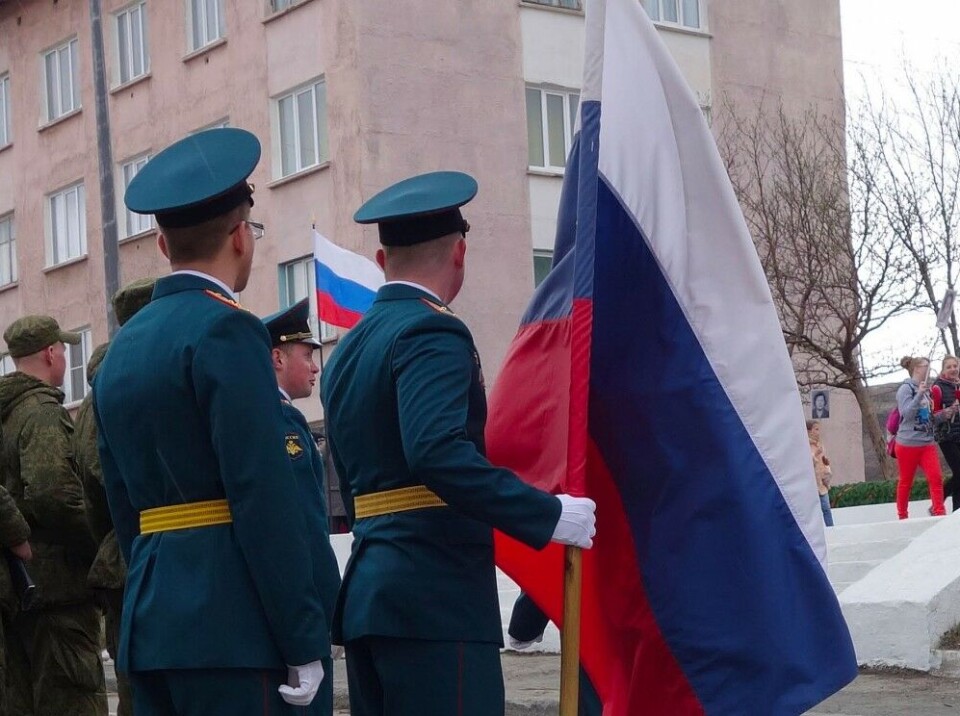
At the feeding trough in a uniform
Disassembling a new class system: Almost every government department has its own uniform and shoulder straps - symbols of an era of omnipotence for Russian officials.
By Tatiana Britskaya
Their name is legion. According to the Ministry of Finance, there are 163 officials for every 10 thousand Russians. So, if we return to the ancient definition of bureaucracy, which satirists and PR people equally love, Russians are the most privileged people in the world. No one else in the world has such a number of civil servants. In absolute numbers, and this is true, China is ahead of us. They have 7 million bureaucrats against our 2.4 million. But per capita, there are almost four times more of them than in the Celestial Empire. And our people give every one of them a uniform.
The Romans invented the military uniform. Because they fought a lot, it was necessary to identify their own people so that they would not accidentally kill each other. Civilians did not seem to have the same security needs so they did not have to dress the same until much later. In the Russian Empire, all bureaucrats had to wear uniforms and their ranks were correlated with military ranks. The bureaucratic uniform was finally streamlined by a great lover of order, Nicholas I, by issuing the “Regulations for Civilian Uniforms” in 1834 , which ordered all officials to wear uniforms in accordance with their ministries and rankings.
In Soviet times, the horrors of tsarist Russia, of course, left us. But now in full accordance with imperial nostalgia, uniforms can be increasingly found on people connected to the sovereignty. And what is more, they come in many different and even unexpected colors.
The new laws regarding this return to imperial fashion started, as they should, in Petersburg in the Legislative Assembly where they first tried to introduce a dress code in 2006. In 2017, they managed to pass a law forbidding men to visit a public place without a tie. A year later, Vitaly Milonov, a brightly colored St. Petersburg deputy for the United Russia party first proposed putting legislators in uniforms but found no support from his colleagues. And rightly so. In questions of grand style, there is no place for democracy. This was a question about exclusive power and demonstrating superiority. Fashion in the country was regulated by the highest authorities starting in the 1600’s with Tsar Alexei Mikhailovich, who ordered demotions for anyone caught wearing a foreign uniform and even had his son Peter punished with hard labor for refusing to wear a uniform. And with this, “stylistic disagreements” with the authorities became a crime against the state.
There must be no disagreements in the ranks! And after this, there were more and more, not only dress codes sent to the departments, but demands for full-fledged uniforms. And not only, uniforms, but military style uniforms with shoulder boards or wound stripes on a tunic, gold embroidery on the cuffs, peaked officer style caps, triangular enlisted men caps and other attributes of paramilitary clothing structure.
And if shoulder boards on a “man with a gun” does not raise any questions for me personally (my questions would only be about the quantity and quality of these people), then for example, the uniform of an employee of the Accounting Chamber should not give rise to bewilderment. But it is bewildering!
And what is more, lessons about how to “dress” start in childhood. School uniforms, previously sent to the trash heap along with portraits of Politburo members, are returning. The cost of this victorious parade is being well sponsored by our community of parents. Parents, swearing at the expense, must now buy their children suits that make them look like bank clerks. As a rule, they do not want to go against the tide but they don’t like it. “Famous sayings and wisdom” come to the rescue, and as has been known since Pushkin’s time, “are surprisingly useful in those cases when we can think of little to justify our decisions.”
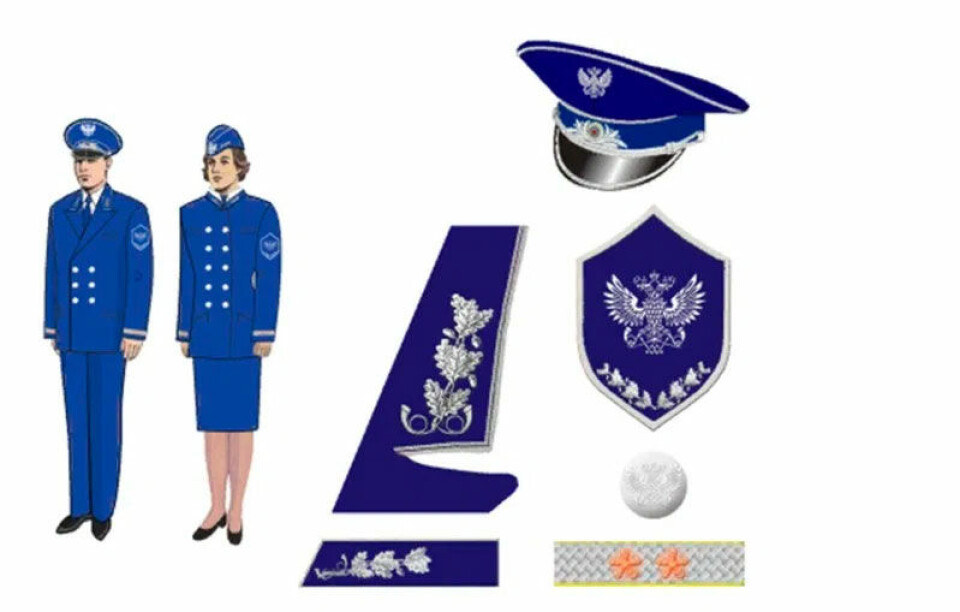
And I remember that brown dress made of disgusting biting fabric, which my mother had to alter, for convenience, turning the uniform into a kind of dressing gown. And we had to fasten that even more hated apron with an elastic band as it did not fit without one. I still do not see anything beautiful or even more comfortable in a Soviet school uniform and moans about the neatness and aesthetics should be directed to the account of unsatisfied soviet fantasies. To the sex shop, comrades, to the sex shop!
The second time in my life I had to try on fetish fashion was in my youth when a family economic crisis sent me to serve in the police.
To them, I was a “snowflake”. This is when you work in some peaceful logistics department but get nevertheless listed as “on the ground”. And there are always vacancies.
I was identified by the traffic police as a “snowflake” but there were no female uniforms available in the warehouse. We instead were all equipped with a male officer’s tunic, an officer’s skirt, trousers and a pea jacket and a cap that we fastened to our hair with hairpins (This was regardless of discomfort to bald people or those with a short haircut). There was also a district policeman’s autumn jacket. This last item would take a worthy place in a torture museum. Oh, that black leatherette jacket with raglan sleeves. It had buttons that stopped buttoning on the first day, they were both hot and cold at the same time but most of all, they were just funny looking. I have never brought so much laughter and joy to people. As soon as I got on the bus, the gloomy passengers in the morning began to smile happily. The prisoners who sewed these amazing costumes clearly hated their craft and were taking revenge on those who might actually wear this magnificence and getting even for all those years wasted aimlessly in prison.
I could not endure it for long. The jacket was donated to the fishermen, the district policeman’s jacket evaporated by itself and the cat shit in the boots. I resigned from the police a year later vowing never to wear a uniform again.
I suspect that the current happy owners of all of these epaulettes also harbor no tender feelings for them. Or said in another way, the multicolored uniforms just make your eyes blink.
Judge for yourself. In Russia, a uniform is assigned to almost all types of “supervisors”. The Federal Service for Consumer Protection’s uniforms flaunt similar colors to something Chichikov described as “lingonberry color with a spark”. Rosselkhoznadzor, oversight over veterinary medicine and agricultural production is dressed in gray-green uniforms. The female sex is allowed a choice of a pillbox hat or a “Che Guevara” style beret called a “Kubanka”, a unisex option, humanely equipped with obligatory ventilation holes, the regulations for which read, “There must be one ventilation hole on the wall of the cap located to the left of the seam. The lower edge of the beret must be edged with leather into which an adjusting cord is threaded. “
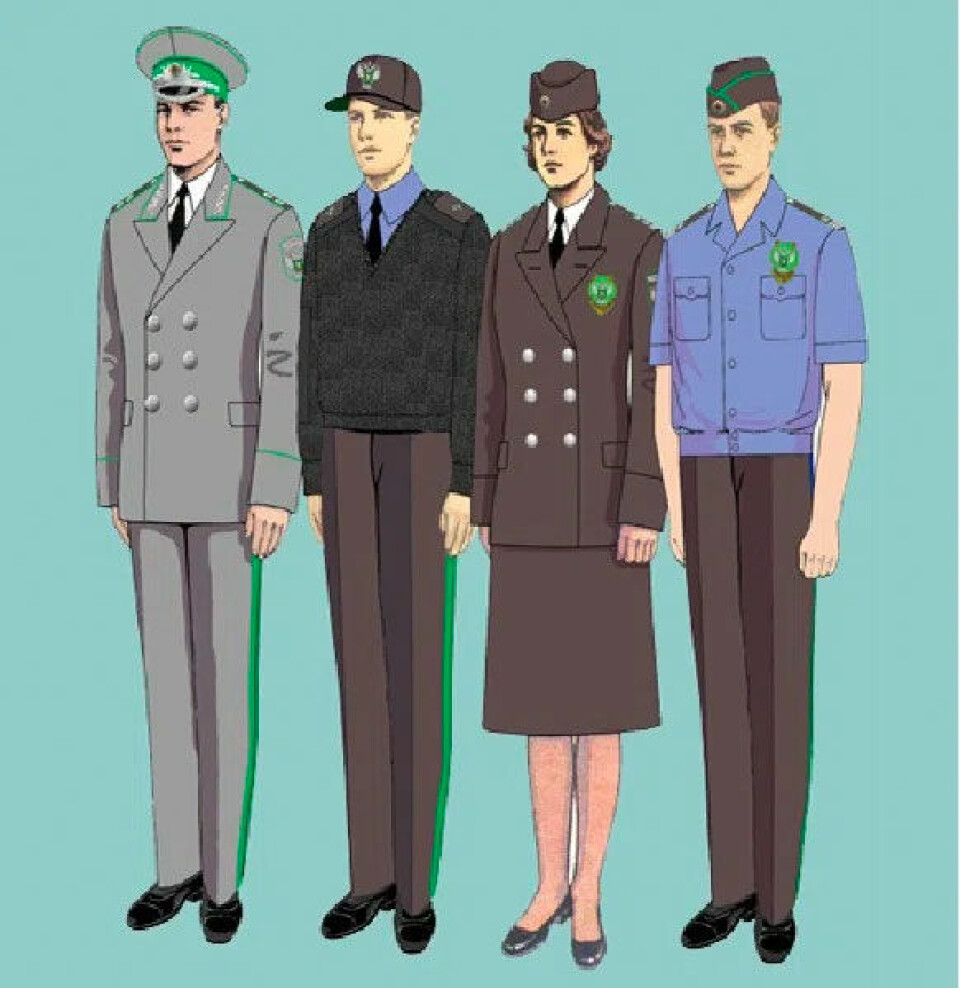
They do not make uniforms for Rostekhnadzor, the environmental service, but they do have jackets with shoulder boards showing rank. The rules call for “A single-breasted jacket with four gold colored snap fastener buttons, a collar and turn-down lapels. At the ends of the collar there must be the emblem of Rostekhnadzor. Sleeves are double seamed and shoulder boards are to be sewn onto the jacket ”.
Hunting supervision is recognizable in gray-green uniforms and forest workers wear dark green.
Rybnadzor, the fish patrol, does not lag behind calling for “A tunic with four snap-button fasteners and re-enforced side slit pockets. The back must have a seam in the middle and a slot at the bottom. There also must be a turn-down collar with double finishing stitching along the edge of the collar. The back has a seam in the middle with an opposite fold from the waistline to the bottom and a slot at the bottom with two posts entering the side seams and a fastening strap at the waistline.”
The multipage order reads like a song. Or as a Gorin quote:
“The waist is ten centimeters lower than in peacetime.”
“Should it be lower?”
“That means it should be higher.”
“And the chest?”
“What about the chest?”
“Should I leave it where it is?”
“No, we will take it with us.”
Rosobrnadzor, the educational service, has not as of yet gotten the uniform call from the “supervisory” departments, but all hope is in vain. It would be worth it since the children are required to wear a uniform. Perhaps teachers and inspectors should wear uniforms like the sinister sadist teacher Ardalyon Borisovich Peredonov from Fedor Sologub’s “The Little Demon”. Nor was it possible to find traces of an appropriate uniform in the bowels of the Roskomnadzor communications and information service, which is more concerned with the insignia of journalists. But Roszdravnadzor, healthcare, has been waiting for their uniform, as reported at last year’s Gaidar Forum by the head of the Federal Ministry of Health Mikhail Murashko. The minister promised that the employees would have different insignia. “Doctors have their own and pharmaceutical specialists should have theirs.” The branch publication “Pharmaceutical Bulletin” then reported that the medical inspectors were worried about the color of the uniform because “all the beautiful colors have already been taken.”
Indeed, if you collected all of these soldiers of the republic in one line with just a bit more color, they would form a rainbow flag.
So far, only orange and yellow are missing. All other colors are still available.
It is more or less possible to justify the presence of a uniform in the more menacing and punishing departments. The “court supervisors”, such as bailiffs, have been tuned in green shirts under blue tunics and a coat with blue piping and a gray collar as well as astrakhan ushankas with a visor and the badge sewn on with five percent gold edging, whatever that means. We can accept the customs officers walking around in thick green. We can deal with blue uniforms for prosecutors (in the States, for example, they would be surprised at this. There the prosecutors are ordinary lawyers without any kind of shoulder boards). We can live with the spinoffs from the prosecutor’s office. But they have retained their blue uniforms.
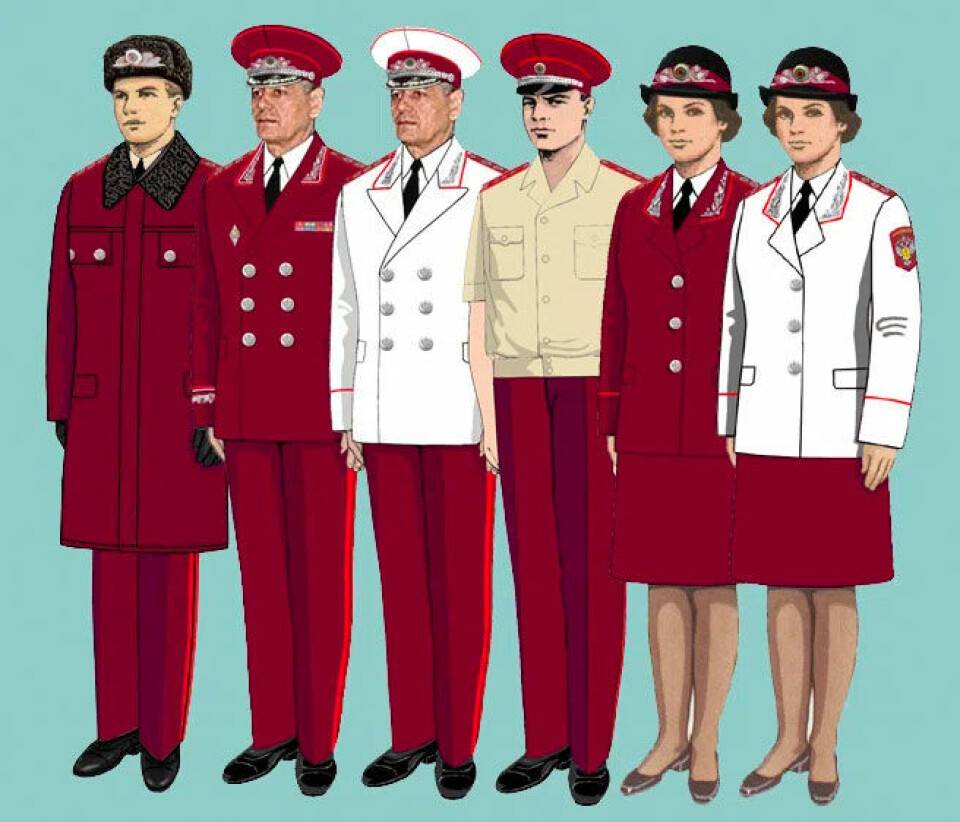
Let’s say those who punish, fine, check and detain must walk around in uniforms to prove their affiliation with their department and authority. But why color differentiate pants for the mail service, whose employees’ uniforms blew up the Internet with an unhealthy resemblance to Stirlitz’s Nazi SS uniform? The Russian Post then made excuses and nodded at a Photoshop hoax. They said that bloggers thickened the colors and that the uniform was not in fact black but dark blue and that there have not been any uniforms like this generally since 2013. They also say that the uniforms that the heads of the postal branches have been photographed in were developed for the games in Sochi. But uniforms will soon be implemented throughout the country. That is, they actually still have them. It seems that the speaker of the department is somewhat confused at this point.
Uniforms worn by transport workers of all departments from civil aviation to Russian Railways. You can easily familiarize yourself with the pattern on the cuffs of the uniforms of the Accounts Chamber or even the State Housing Inspection, at least in Moscow. And shoulder boards are available. Those who have reached the rank of a real 1st class Moscow regional state advisor will receive three large radiant stars embroidered on their shoulders. Three star generals of the attic pipe brigade.
The Accounts Chamber has generally gone with 19th century uniforms. At the meetings of the board, these “reenactors” put on the uniforms of officials of the State Accounts Office . The cuffs are lavishly decorated with gold embroidery.
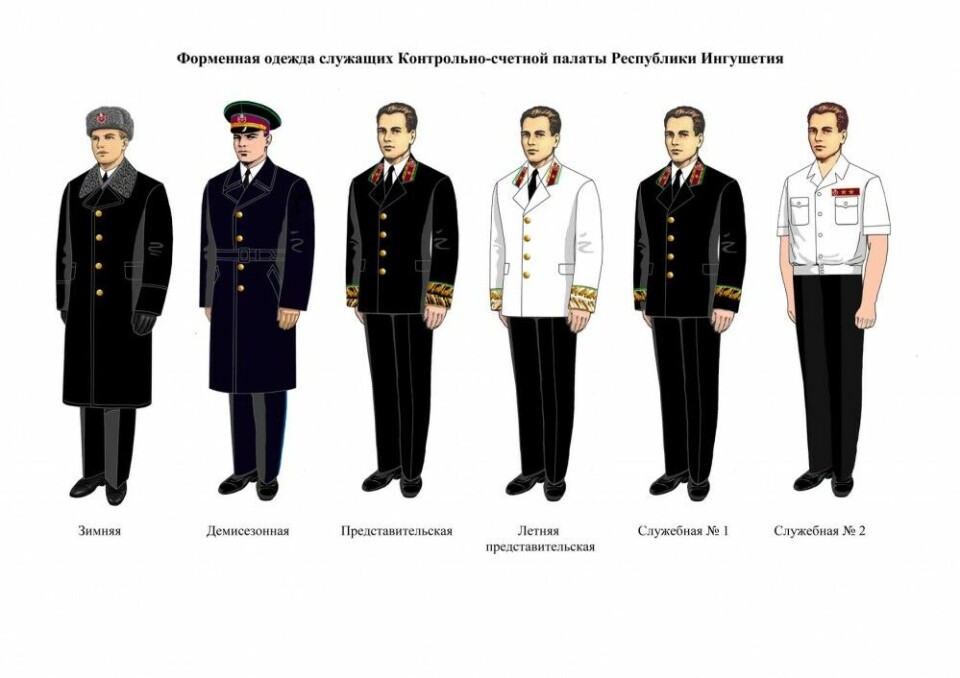
Any established uniform includes several changes to account for the seasons plus field and dress options including shoes. The cost of these outfits range from 35 to 55 thousand rubles (400 to 600 euro) or even higher. And as a rule, departmental orders for tailoring are executed in the colonies of the FSIN system. There are also civilian enterprises that undertake such orders. It is difficult to calculate how much budget money is spent on this annually. But it must be kept in mind that uniforms must be replaced and usually, every 5 years. So, this fashion fun from the government departments is also a solid budgetary expenditure.
Despite the fact that this fascination with uniforms is becoming more and more widespread, every now and then there are some completely curious initiatives like sewing uniforms for officials of the Belgorod mayor’s office (blue-gray, looks like a police officer) or dressing in jackets and caps the color of “the smoke and flame of Navarino Bay” like Bashkir officials (they were however obliged to sew the uniforms at their own expense).
How can one even work without a uniform? “No one is fighting in a single-breasted uniform now. The war is on the doorstep but we are not ready! ” - as the same character of Grigory Gorin used to say.















